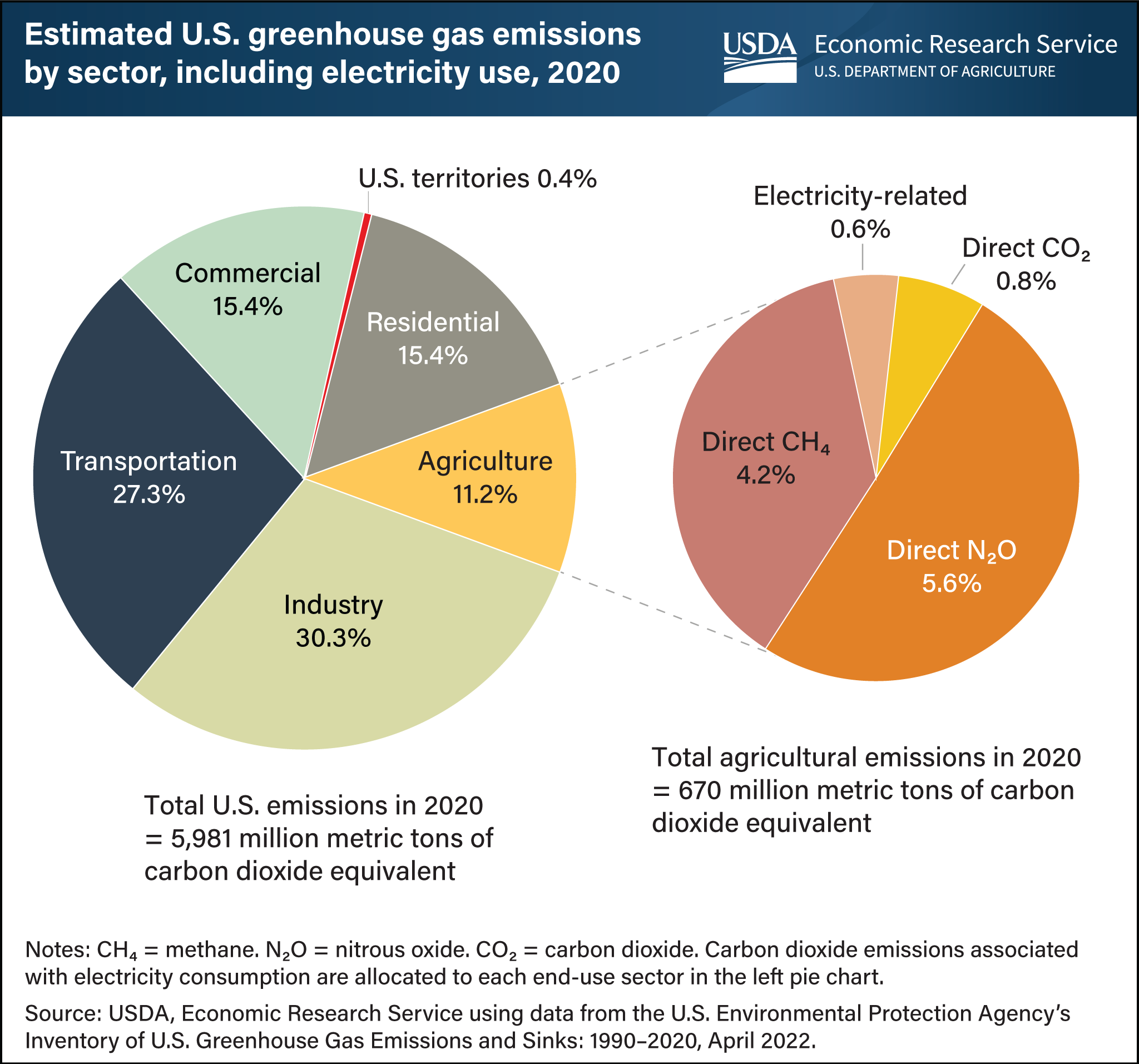Agriculture, including electricity use, accounted for an estimated 11.2 percent of U.S. greenhouse gas emissions in 2020
- by Ron Sands
- 7/11/2022

Farming activities in the United States accounted for 11.2 percent of U.S. greenhouse gas emissions in 2020. From 2019 to 2020, agricultural greenhouse gas emissions declined from 699 to 670 million metric tons of carbon dioxide equivalent but increased from 10.6 percent to 11.2 percent as a share of the U.S. economy. The Environmental Protection Agency estimated that in 2020 agriculture produced 5.6 percent as nitrous oxide (N2O), 4.2 percent as methane (CH4), 0.8 percent as on-farm carbon dioxide (CO2), and 0.6 percent emitted indirectly through the electricity that agriculture consumes. Emissions come from cropping activities that emit nitrous oxide, such as fertilizer application and manure storage and management, and enteric fermentation (a normal digestive process in animals), which produces methane. Of the economic sectors in the United States defined by the Energy Information Administration, industry (excluding agricultural emissions) accounted for the largest portion of total greenhouse gas emissions (30.3 percent), followed by transportation, residential, commercial, agriculture, and U.S. territories (no specific consumption data can be attributed within the territories, so they are listed as a group). This chart appears in the USDA, Economic Research Service data product Ag and Food Statistics: Charting the Essentials.

